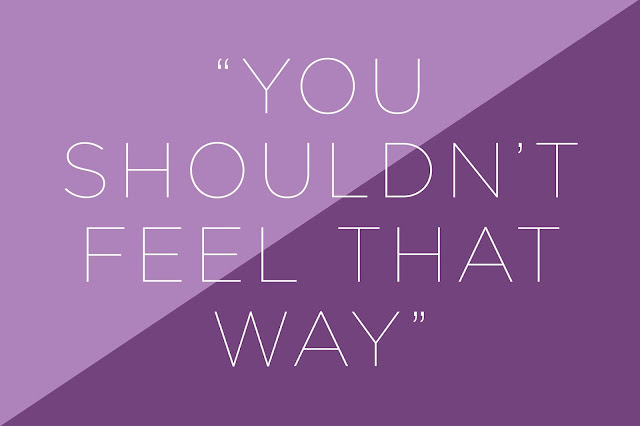I had so much love to give our adopted son. What I didn’t have were answers.
I have always wanted to adopt, even when I was a child with a penchant for writing poetry instead of going out for recess. She looked to the stars / And wondered / Someday / Will I find my mother?
“Who is the little girl in your poem?” asked Miss Loros as I hovered beside her desk, where she was focused on correcting a pile of math quizzes.
“She’s an orphan,” I said. “Someday, I want to be the mother of orphans.”
“Then you’d be dead,” she pointed out, not taking her eyes off her flow of check and X marks.
At the end of fourth grade, while my mother was drying a wooden salad bowl with a dish towel, I made an announcement.
“Mommy, when I grow up, I’m going to adopt a hundred children, one from every country.” Two long, straight braids framed my face, and my orange gauze shirt was embroidered with flowers dotted with tiny silver mirrors.
“That’s a wonderful idea,” my mom said. She turned and placed her cool, damp fingers under my chin. “Even adopting one child would be a beautiful thing.”
So it was perhaps inevitable that after having two daughters, my husband, Yosef, and I decided to expand our family by looking abroad. In October 1999, I flew to Ethiopia and brought back ten-month-old Adar to our home in Newton, Massachusetts.
When Adar was a toddler, hiding wasn’t a way to vanish. It was a way to appear.
“Wayaz Adawi?” a tiny, disembodied voice called from behind the couch, signaling me to find him.
I put my hands on my hips, scanned the room, and wondered aloud, “Where IS Adari? In a drawer? No …on the bookshelf? No … ”
My heart stretched to bursting in its pull toward him: his soft cheek against mine, his arms surprisingly strong, his hands imprinting themselves on my shoulder blades, the kiss I will plant with a long mm-mwah on his silky forehead. This was his story of becoming my son.
He jumped out from behind the couch—a toddler Sammy Davis Jr. after a big number—huge smile, arms outstretched. I gotta be meeeee!
Cue the lights, the applause, the laughter, and that big hug. Here you are, our hug said to each other. Always here. Always mine.
“Mama, wayaz my tummy-mommy?” he asked, his nose against mine.
“I don’t know, sweetie,” I said, bracing myself, gathering my thoughts. “Sometimes I wonder about her too.”
Every night when he was four, Adar pulled the same book from his shelf, handed it to me, climbed onto his bed, and nestled under my arm, leaning into me.
“It was missing a piece,” I read to Adar from the book.
Even though he could not yet read, he turned each page at the right time. The illustrations prompted him to recite the prose along with me, word for word.
“And it was not happy. So it set off in search of its missing piece,” he said solemnly.
The Missing Piece, written and illustrated by Shel Silverstein, is about a circle, drawn with sparse black lines on a white page, that has a missing piece the shape and relative size of a pizza slice. The circle goes on a journey in search of its missing piece, traveling through rain and snow and hot sun, finding pieces that either don’t fit or don’t want to be anyone’s missing piece.
“How come it doesn’t want to be someone’s piece?” Adar asked.
“I don’t know,” I answered. Neither of us could understand not wanting to belong to someone.
Because it was incomplete, the circle moved slowly. As it plodded along, it smelled flowers, had a butterfly land on it, and noticed the world around it, all the while singing its song through a mouth formed by the errant pizza slice: “Oh, I’m looking for my missing piece, hi-dee-ho, here I go, looking for my missing piece.”
Adar took cover under my shirt. “Pretend I’m in your tummy,” he said.
He was small enough to fit his whole body under my loose top. He folded his arms and bent his knees to his chest, his eyes peering out at my throat as he carefully covered each toe with my shirt hem.
This was not our first time pretending I was pregnant with him. Often at bedtime, Adar would sit nestled under my T-shirt, look out through the stretched neckline, and whisper the command, “Pretend you’re walking.”
Lying supine on his bed under his warm, soft weight, I would move my feet as if strolling along the sidewalk. Peeking through my neckline, he’d again direct me. “Now you see someone you know.”
“Hi, how are you?” I said obligingly. “Oh, me? I’m fine. Just taking a walk with my baby in my tummy! OK, bye.”
“Now you’re walking again,” he’d say. “Now you see someone you know.”
“Hi, Auntie Laura. Yup, I’m just taking a walk with my baby in my tummy!”
“Can I really go inside your tummy?” Adar asked, his big eyes wide at my chin.
“You can pretend, but you can’t really go inside my tummy,” I explained.
“Why? What’s in there?” he demanded as if some sixth sense had set off internal alarms, flashing and wailing like the spacecraft in Aliens. His eyebrows scrunched in his telltale mix of concern and curiosity. Funny, Yosef and I had just been talking about having another birth child.
We lay smushed together on his single bed, his pile of storybooks stacked beside us on the green nightstand. In the soft light that glowed through a pale yellow lampshade, we looked at each other. I pulled his head onto my shoulder and kissed it.
“Mommy?”
“Mmm.”
“Who’s my tummy-mommy?”
“I don’t know,” I said quietly. My eyes welled with tears. Many times, I had begged God to let his mother know that her son, our son, was safe and loved. While my sorrow was genuine, it was also vain and indulgent, an illusion of redemption from my complicity in the world’s pain that played itself out all too sharply in another woman’s life—if she was still alive.
“Why? Nobody knows her?”
“Well, nobody we know knows her.”
“Did my tummy-mommy keep me?” Adar continued.
“No,” I said gently as I slipped my arm under his upper back.
He adjusted his head onto my shoulder. “Did she nurse me?”
“I don’t know, sweetie.”
“Did it hurt my tummy-mommy when I was born?”
“Childbirth hurts for a while,” I said vaguely.
“Is she dead?”
She could be wondering the same of Adar right now. She must have feared his death.
Looking into my eyes, his face serious and thoughtful, Adar asked if his tummy-mommy was my friend Sally. Her brown skin might have prompted this theory.
“I grew in Sally’s tummy and then she brought me to Ethiopia and then Mommy came to get me,” he announced.
“No, sweetie,” I said, managing not to laugh. “Sally is not your tummy-mommy.”
“Maybe a lion ate me up and then pooped me out in Ethiopia.”
I laughed—poop is funny.
He looked at me gravely, and I bit the inside of my cheeks.
“One person we know met her,” he said.
“Really, honey?” I lifted my head to see his whole face. “Who was that?”
“Me. When I was born.”
“Oh, my God. You’re right, sweetie. You met her.” I pulled his blanket around him more snugly.
“But I don’t remember her,” he said quietly, lowering his gaze.
“Oh, my sweet boy,” I said, turning his face toward me and holding each cheek in my hands. “No one ever remembers when they were babies.”
There was no remembering for him, no recollection of a face or the anchor of a story. No who or what or how or why to understand his coming to be. And I had none of that to give him. I had only my own messy mosaic of stories—our family inside the unwieldy, unfolding narrative of the Jewish people—within which he could weave his life.
Appreciating mystery was the only way that I could honestly approach Adar’s origins. In this way, he was a portal to kedusha, the Hebrew word for holiness. “I will be what I will be” was God’s answer to Moses’ question, “Who are you?” Moses’ future was becoming known, even as his origins were unknown to him. How could he have remembered his mother, Yocheved, placing him in a basket she had lined with bitumen and pitch, the basket that would carry him on the river away from the Egyptian edict of death? How was she able to get her hands to obey her intention and let go of that basket? My deepest fears formed themselves into prayer, even when I was simply buckling my child into his car seat.
Moses’ cry carried beyond the hum and thrum of the river and pierced the conversation of Pharaoh’s daughter and her handmaids as they bathed. Thus, the grown daughter of Pharaoh “heard the cries of the child.” Tragically, Yocheved hid herself in order to save her son.
Perhaps Adar’s birth mother prepared him in a basket, wrapped and warm, protected from mosquitoes, sun, and rain. Perhaps she, like the woman who released Moses to the Nile’s flow, “stationed herself at a distance” to ensure his safety as long as she could. But Adar’s birth mother never got to “lift her eyes” to redemption, at least not with him.
She and I were a team, like Yocheved and Pharaoh’s daughter. Did Yocheved call out for her son after he was ensconced in Pharaoh’s palace? Did the daughter of Pharaoh, raising her beautiful, wise boy, ever cry for Yocheved’s loss?
Oh, Adar. Your birth mother has taken her place in the long line of women who could save their children only by leaving them. Our tapestry of stories has raw, ragged holes. And, now, a bedtime story.
I held him tightly, his head on my chest as we read aloud together. Toward the end, the circle finds its missing piece. Finally a complete circle, it gains momentum and rolls along so fast that it could not stop to talk to a worm or smell a flower, too fast for a butterfly to land.
Aha, the circle says, so that’s how it is, and gently sets the piece down.
















